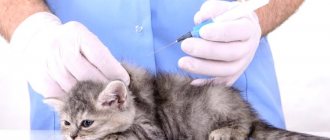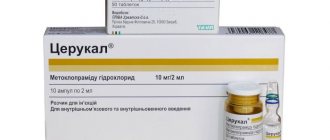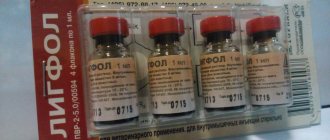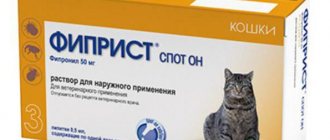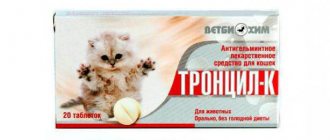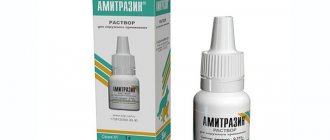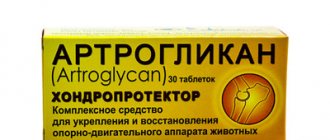6052Pavel
Often, treatment for cats does not bring the desired effect, and then the veterinarian decides to prescribe an antibiotic to speed up the recovery process. Sumamed for cats is a common broad-spectrum antibiotic. Its main purpose is to fight various kinds of infections, which most often affect the respiratory tract, but not only, it is also quite effective in the treatment of chlamydia, toxoplasmosis and rhinotracheitis, which often turns into pneumonia in cats if not treated correctly.
The active ingredient in Sumamed is azithromycin, and it is produced in several forms, which is quite convenient in selecting treatment for the animal. Release forms :
- suspension,
- pills
- capsules.
© shutterstock
Many veterinarians prefer to prescribe Sumamed in suspension for upper respiratory tract infections.
Undesirable consequences
When the antibacterial drug is used correctly, the therapy proceeds well and the cat recovers quickly without any negative consequences.
But in exceptional cases or in case of an overdose of Sumamed, a rash may appear on the cat’s body, the pet will experience frequent loose stools, swelling, vomiting and even temporary hearing loss. If you observe the listed phenomena in your pet, you should urgently stop therapy and take him to a veterinary clinic, where the veterinarian will determine the further advisability of taking Sumamed and carry out symptomatic measures. https://youtube.com/watch?v=qutEA_QDSTg
Drug analogues
Chemomycin can be given to an animal if such a change in antibiotic is approved by its doctor.
If for some reason it is not possible to take Sumamed, it is replaced with a medicine that can have a similar effect on the body. For people, the list of antibiotic analogues is impressive, but whether any of them can be given to a cat must be determined by a veterinarian. So, the following medications can be used as a replacement:
- "Azithromycin";
- "Azitrox";
- "Vilprafen";
- "Clarithromycin";
- "Fromilid";
- "Erythromycin";
- "Hemomycin."
Standard dosage regimen
The antibiotic Sumamed is available in powder form, from which you will need to prepare a suspension. It is best to take the resulting solution with a syringe and pour it into the cat’s mouth, after removing the needle. This method is considered the most convenient. For example, with a disease such as rhinotracheitis, this method of treatment can only be used. Usually, with this disease, a cat suffers from a suffocating cough and while taking the medicine, it can simply choke it incorrectly; in addition, it is painful for the cat to eat and drink even ordinary water, let alone tablets.
The consequences of treating a cat with Sumamed in this way may not be good. Giving a cat medicine from a syringe is not difficult. You just need to hold his head tighter and, opening his mouth slightly, with the same syringe without a needle, pour its contents into the cat’s mouth.
The dosage will be from 5 to 15 mg per kilogram of pet; some owners find it difficult to calculate the dosage themselves, and this is correct. It is best to consult a specialist and adhere to his recommendations for the entire course of treatment. Then the risk of overdose or insufficient dosage in the medicine will be eliminated. The medication is taken twice a day, with an interval of at least 12 hours between doses.
shutterstock
What makes Sumamed suspension for cats different is that from the first day of its use it begins to accumulate in the cat’s body, affecting the source of infection. Even after taking this drug, it remains in the body for up to 7 days, so relapses are excluded.
This drug is approved for cats suffering from renal failure. But it is better not to give Sumamed to cats with liver problems; for them it is on the prohibited list.
Side effects include such symptoms that occur after taking the medicine as vomiting, diarrhea, hearing loss, and the appearance of a rash on the skin.
Antibiotic dosage for pets
No owner can independently determine the required dose for a cat; only a specialist with a veterinary education can do this. What antibiotics and in what doses can be given to cats will be decided by the veterinarian after examining the animal and determining the disease.
Most often, injections are prescribed up to two times a day, the tablets are divided into 4 parts and fed ¼ part, in capsules, antibiotics are added to sour cream - one capsule per day.
The course of treatment lasts no more than 14 days
Important! The dosage of the drug depends on the complexity of the infection, and the duration of the course should not exceed 14 days.
Composition and properties
The medical product Sumamed is sold in the form of a suspension, tablets and capsules intended for oral administration. The main component of the drug is azithromycin, which, being a bacteriostatic antibiotic, belongs to the group of macrolides-azalides. The principle of action of the active component is due to its ability to suppress the protein synthesis of a pathogenic cell, as a result, the growth of bacteria slows down and the reproduction of bacteria stops. The therapeutic activity of “Sumamed” extends to anaerobes, gram+ and gram-microorganisms. After the dose is taken, the components of the antibiotic are easily absorbed and quickly spread throughout the body. The maximum concentration of the drug is achieved after 2-3 hours.
Impact on the body and side effects
The active ingredients of the antibiotic are macrolides and azalides. They are quickly absorbed through the intestinal walls, reaching maximum concentrations in the blood after 1-2 hours. The components of the drug penetrate the cells of pathogenic bacteria (or viral particles) and block the processes of protein synthesis. As a result, infectious pathogens lose their ability to reproduce, after which they die and are naturally eliminated from the body.
shutterstock
Side effects that are associated with individual intolerance to individual components or overdose are also allowed. These may be symptoms of poisoning (nausea, vomiting, weakness, and others), as well as lethargy, drowsiness, agitation, and nervous system disorders.
Recommendations for use
In veterinary medicine, the suspension form of the drug is more commonly used.
According to many animal breeders, the Sumamed suspension is more convenient for cats. The dosage of the medicine is calculated by the veterinarian individually for each pet based on its body weight, the diagnosis and the severity of its course. Doctors often have to change the dose of the drug during therapy, based on the condition of the sick pet.
This is why it is extremely important that the kitten is treated directly by a veterinarian. Prescribing an antibiotic to your four-legged pet on your own can lead to disastrous results.
It is recommended to take the medicine in the form of a suspension into a syringe without a needle and slowly pour it into the cat’s mouth. This dosage form of “Sumamed” is especially relevant for pets with rhinotracheitis. With this disease, the purr usually breathes poorly, coughs suffocate her, it is difficult for her to eat and even drink water, so during self-administration she may choke the medicine incorrectly, or even choke on the pill. Typically the duration of treatment for cats is 5 days. But if necessary and solely at the discretion of the veterinarian, the therapeutic course is extended to 2 weeks. The dosage of “Sumamed” is calculated based on the pet’s body weight, namely: 5-15 mg for every kilogram of the cat’s weight. The antibiotic is taken twice a day, with an equal interval of 12 hours. Experienced veterinarians recommend giving the drug to the purr 60 minutes before a meal or 2 hours after a meal.
Sumamed for worms
Not all cat owners have a veterinary education, and some are far from medicine at all, so the question “do worms in cats die from Sumamed” is quite common.
Sometimes doctors prescribe this drug for worms. But it is the doctor who must calculate the dosage, taking into account the weight of the animal. It is better to give the medicine in the form of a diluted suspension. And most importantly, the positive dynamics in the neighbors’ treatment of their pet should not be a guide to action.
Useful articles for your pet
How to properly treat colds in cats
Like people, cats can catch a cold, and typical symptoms will arise: the cat refuses food, is depressed, and breathing becomes harsh.
There is no specific medicine to treat colds in cats. Many owners are interested in what antibiotics can be given to cats for colds? However, we should not forget that antibiotics are effective only for bacterial infections, but they are useless for viral diseases. For colds, Interferon is usually used, as well as immunoglobulins, but they are prescribed only in the first days of the disease.
Only in case of complications due to a viral disease can a veterinarian prescribe an antibiotic that is suitable individually for each pet. But if this does not happen, the cat is provided with a sufficient amount of drink per day, possibly from a syringe, good humidity in the room, and, if necessary, vitamins by injection. Usually after this the animal gets better.
Interferon is usually used for colds.
The most popular antibiotics used to treat cats
Are there specialized antibiotics for cats? Yes, there are such drugs, but their production is difficult, so human antibiotics are used to treat pets. Let's figure out which drugs can be given to cats.
One such antibiotic is Azithromycin, which is most often used for middle ear infections, chlamydia, streptococcal and staphylococcal infections.
If your cat has wounds with suppuration, burns, boils or other skin infections, use tetracycline ointment.
Amoxiclav (penicillin group) is used during infections of the digestive system and respiratory tract in cats.
Azithromycin is most often used for middle ear infections, chlamydia, streptococcal and staphylococcal infections
Amoxicillin injection is prescribed to animals for inflammation of the bladder of an infectious nature, inflammatory processes in the lungs, and infectious lesions of the bones.
Gentamicin is the most inexpensive antibacterial agent and is often used for diseases of the bladder, eyes, ear infections, skin diseases, and infectious inflammation of the respiratory tract.
Indications and contraindications
The high therapeutic effectiveness of “Sumamed” in the complex treatment of cats diagnosed with chlamydial conjunctivitis has been proven by Doctor of Veterinary Sciences A. Yu. Grechikha. According to the official instructions, the drug treats infections of the upper and lower respiratory tract, ENT organs, eliminates infectious lesions of the skin and soft tissues, and also helps to cope with the initial stage of Lyme disease. In the list of indications provided by the manufacturer, you cannot find such a disease as gingivitis. This pathology is characterized by inflammation of the gums, which often occurs after a lost tooth. It is advisable to use Sumamed for kittens with gingivitis only if it is necessary to deliver the medicine to the deeper layers of gum tissue.
